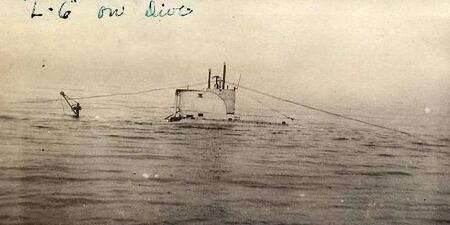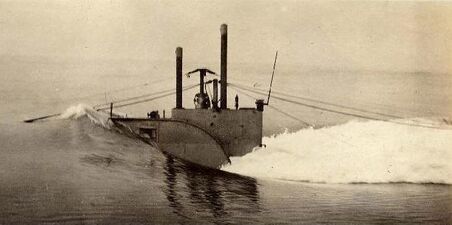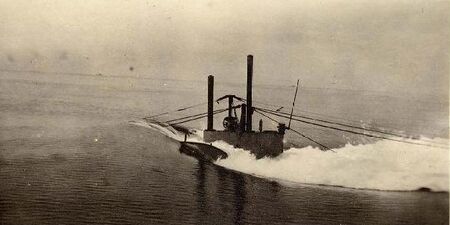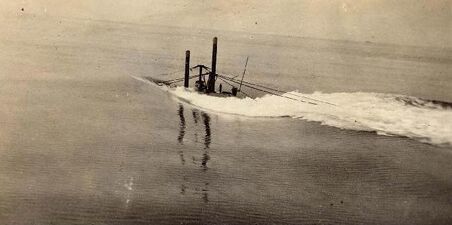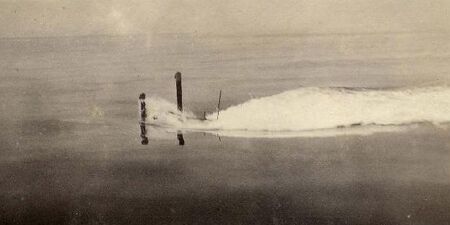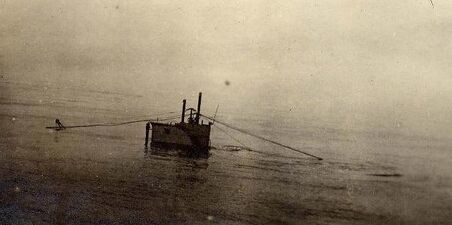L-6
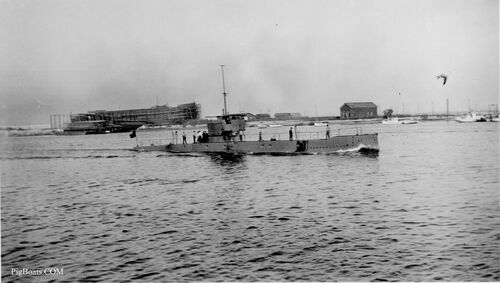
L-6 has a canvas bridge structure on her fairwater, indicating that his is prior to her transfer to the Atlantic Fleet and her deployment to Europe in the fall of 1918. She would have had a permanent metal chariot bridge by that point. The Lake design L-boats were some of the first to have permanent chariot bridges installed, as seen in the spring of 1918 photo below. Forward of her fairwater is a thick pole-like object. This is the retracted 3"/23 caliber Mk 9 gun. It is retracted into a watertight tub that penetrates down into the forward end of the control room. The muzzle end of the barrel is closed off with a removable tampion.
Just forward of the gun barrel is the torpedo loading hatch. All the way forward the raised forecastle deck covers a bow buoyancy tank intended to make the boat ride better while heading into a wave. The circular ports in the side of the superstructure are flood ports for the watertight superstructure. Simon Lake was always concerned about his designs not having sufficient buoyancy on the surface, so the watertight superstructure was designed to alleviate this situation. It made his boats slow divers.
Photo in the private collection of David Johnston.
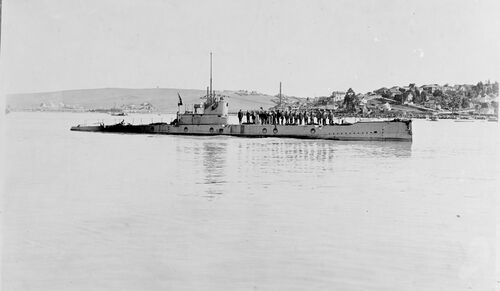
L-6 underway in the Napa River near the Mare Island Navy Yard, Vallejo, CA., April 15, 1918. Line handlers are lined up on the forward deck with mooring lines flaked out and ready to use. There is one crewman visible in the motor room hatch aft of the conning tower fairwater. By the date of this photo, L-6 has had her permanent chariot style bridge structure installed. Note: NHHC was not completely sure of the photo I.D. They state it could be L-6 or L-7.
Photo NH 51134, courtesy of the NHHC.
Note that there is very little angle on the boat. Being a Lake design, these boats had midships diving planes and were intended to dive at a zero-angle, which Simon Lake referred to as "even keel diving". By the sixth photo she has come to a stop and is surfacing. Stopping then surfacing was a somewhat unusual procedure. Normally the boats would have made a running surface maneuver.
Photos courtesy of Mike Dilley, son of Homer "Pat" Dilley, WW I sub vet.
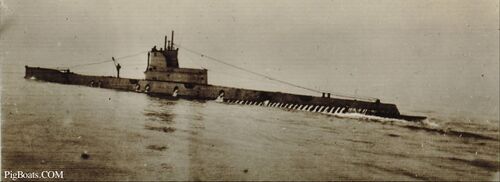
In this seventh photo the L-6 has fully surfaced. Men are on the bridge and water is draining from the superstructure and from the round open scuppers for her watertight superstructure as she moves through the long gentle swells. The slightly humped bow and these round scuppers/flood valves identify this as a Lake design submarine.
Photo courtesy of Mike Dilley, son of Homer "Pat" Dilley, WW I sub vet.
Page created by:
Ric Hedman & David Johnston
1999 - 2023 - PigBoats.COM©
Mountlake Terrace, WA, Norfolk, VA
webmaster at pigboats dot com

